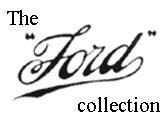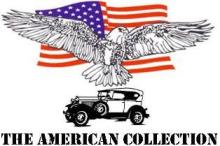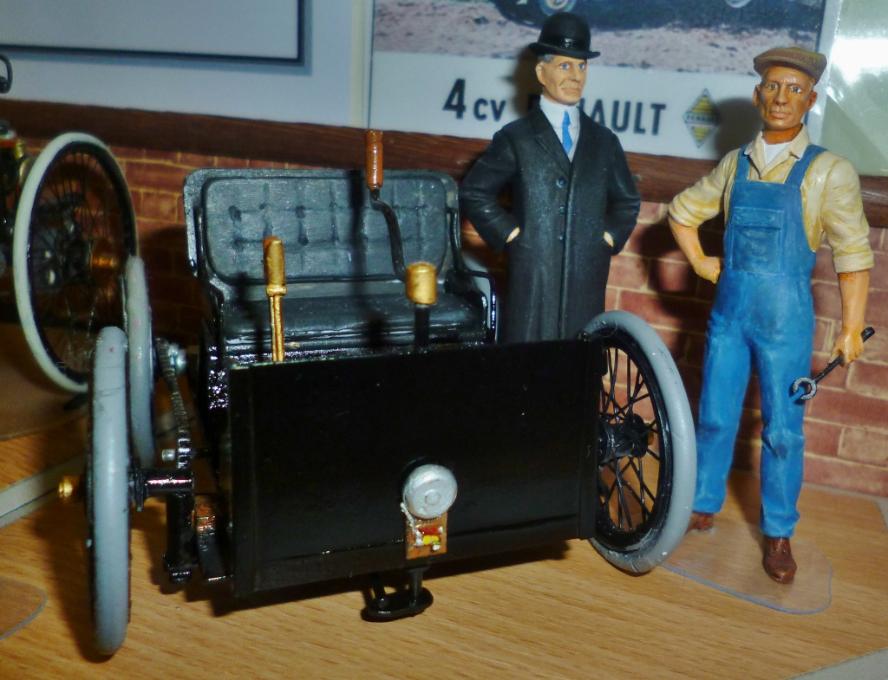
1896 Ford Quadricycle.
In 1893 Henry Ford was 30 years old and working as Thomas Edison's Chief Engineer at the later's company, ”the Edison Illuminating Company”, Detroit, Michigan. Fellow engineer, Charles King, recalls that Ford saw an “American Machinist magazine” article on the gasoline engine in it's November 1895 issue and Ford said "I want to build one of these." Being thoroughly conversant in the intricacies of steam engines and combustion Ford certainly able to do so.
On call 24/7 to the Edison Illuminating Company, Ford's personal time might have been thought of as scarce, however, this actually gave him a more flexible working arrangement so that he could do his experiments and build a gasoline engine. His boss Thomas Edison was also a supporter and when shown Ford’s plans for a gasoline horseless carriage Edison actively encouraged Ford to carry on working on the idea.
Henry Ford was one of those people who excelled in getting others enthusiastic about his plans and using his circle of engineering friends, including Charles King, he was able to develop a makeshift which included a large flywheel which he had reclaimed from an old lathe. Ford's first successful engine was completed late in 1894 and tested on the kitchen table on Christmas Eve, in front of his wife.
This progress encouraged Ford to keep on working with the whole horseless carriage idea, something Charles King was also working on, and large number of people gave their time or advice as Ford's machine took shape in a makeshift workshop Ford had behind his home on Bagley Avenue, Detroit. Ford even convinced his neighbour, Felix Julian (who wasn't an engineer at all) to allow ford donate his half of the shed to the project. Notable contributors to the Quadricycle were Jim Bishop, George Cato, Edward (Spider) Huff, and David Bell.
Charles Brady King was building his own motor vehicle at the same time as Ford, and actually finished his machine in the March of 1896. He is reported as driving it as fast as 7mph in front of “hundreds of spectators” on the 6th of March, 1896. Ford used a bicycle to follow King's test run and learned certain things from the event. King had proved the concept but Ford saw the flaws. King's car was heavy wooden vehicle which resembled a carriage with an engine.
Ford was to draw heavily on bicycle manufacturing techniques to create a much simpler, and lighter, machine utilizing commonly available materials. At the time, there was no fixed design or layout for cars so Ford's prototype automobile is more innovative in retrospect than it might have been considered at the time. In fact, all the cars of the period were expensive hand built items generally considered peculiar machines meant only as play things for the rich. The layout of Ford's Quadricycle marks it out from others and provided the pointers for all the more practical designs that came from Ford himself and many others.
Working out of a brick shed at his house Ford first made a wood frame but as his thoughts developed, and having seen King's vehicle run, he built a frame of angle iron with wooden body parts. The seat, under which sat a 11Ltr fuel tank and a coolant water tank, came from a carriage and the four wheels were bicycle wheels. Rudimentary steering was effected by a tiller and braking was non-existent. A two-cylinder ethanol-powered engine was laid horizontally fore and aft at the rear of the frame with power transferred via a combination of leather belts and chains to drive the rear wheels.
In more detail, the engine followed the design of the Kane-Pennington motor as described in the “American Machinist magazine” issue of the 9th of January, 1896. The valves were laid out to the F-head design with the two cylinders giving 59 cubic inch capacity. In keeping with the home made philosophy these cylinders were made by cutting in half a length of scrap pipe from a steam engine and bored out to the right diameter. The flywheel as mentioned came from a old lathe. Horsepower is thought to be similar to that of other Kane-Pennington engines as 4hp @ 500 rpm. There wasn't a full set of plans in the magazine so Ford was forced to design his own ignition system and after an air cooled trial found it ran to hat and designed water jackets to cool the cylinders.
The vehicle had two manually operated gears which could have given the Quadricycle a speed of up to 20mph, unfortunately, in practice the engine had insufficient torque to allow the 2nd gear to be used. Warning for pedestrians and other road users was facilitated by the fixation of a domestic electric doorbell to the front of the dashboard.
Two years and three developmental stages later the experimentation was completed and vehicle, which Ford called “Quadricycle” as it ran on four bicycle wheels and had chains driving the rear wheels, had its final finishing touches added in the small hours of the 4th of June 1896.
The Test drive 4th of June,1896.
No sooner was the machine ready to run than Ford wanted to run it. So in the wee small hours Henry Ford and Jim Bishop began to push it to the door....... only to find that in their passion to build the machine every one had neglected to consider extricating it from the building and the doorway was too narrow!
One can only wonder just how much noise the neighbours of 58 Bagley Avenue had already endured but now they were to experience the two men setting about removing a door frame, and more than a few bricks, with axes and hammers in order to get the 500-pound Quadricycle out of the workshop and down to the road.
Times vary but somewhere around 4:00 a.m. Ford started his test drive down Bagley Avenue to Grand River Avenue, on to Washington Boulevard towards the Edison plant. Unfortunately the engine stopped and Bishop and Ford pushed the Quadricycle the rest of the way. At the works the pair were able to replaced a nut and loose spring. They could then resume the inaugural drive back to Ford's house.
A month later Ford drove the Quadricycle 40km to his father's farm, apparently reaching a top speed of 20mph (32kph). Mr. Ford Snr. cautiously inspected the contraption. He later confessed to a neighbour that :-
“John and William [Henry's brothers] are all right, but Henry worries me. He doesn't seem to settle down, and I don't know what's going to become of him."
After just a few more months Ford sold his Quadricycle for $200 so as to raise money to build two more of his vehicles, suitably improved of course. Approximately eight years later, after setting up the Henry Ford Company in 1903, Ford bought the vehicle back at a cost of $65. He put a new copper water tank under the seat to replace the old wooden one and the Quadricycle now resides in “The Henry Ford museum” in Dearborn, Michigan. Henry Ford himself went on to form the Ford Motor Company and became one of the richest men in the world.
Ford and Edison
Henry Ford and Thomas Edison remained good friends lavishing expensive gifts on each other and going camping together. What isn't well known is that Ford and Edison collaborated on the idea of an electric powered car. Long after Ford had left Edison's employ and had started the Henry Ford Company Edison continued to encourage Ford in his pursuit of the gasoline powered automobile. Edison, having continued his own experiments had developed a nickel-iron battery and in 1904 unveiled plans to convert four cars to electric power. Edison batteries would be used of course. Edison's motives now became clear as he was soon denouncing gasoline powered cars and promoting his own vehicles.
“Electricity is the thing. There are no whirring and grinding gears with their numerous levers to confuse. There is not that almost terrifying uncertain throb and whirr of the powerful combustion engine. There is no water-circulating system to get out of order — no dangerous and evil-smelling gasoline and no noise.”
For his part Ford worked ever harder to produce a reliable car that the ordinary person could afford, eventually launching just that with the Model T Ford; for which Ford developed a flywheel magneto system specifically to avoid using a battery.
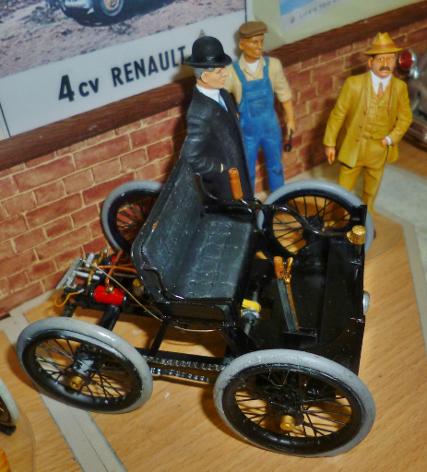
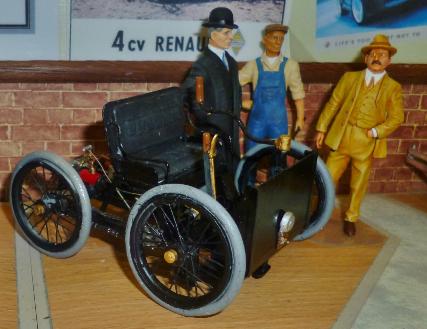
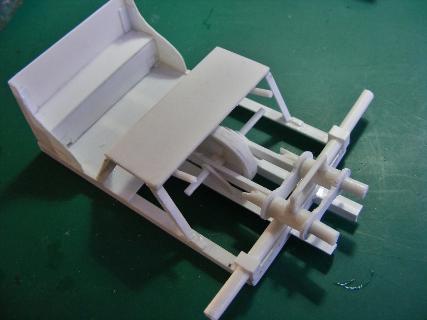
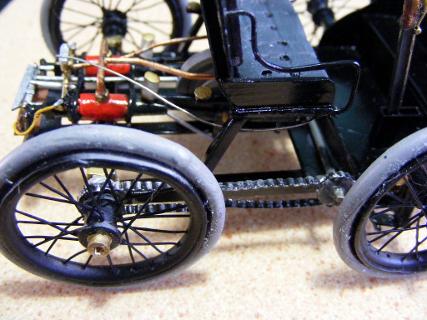
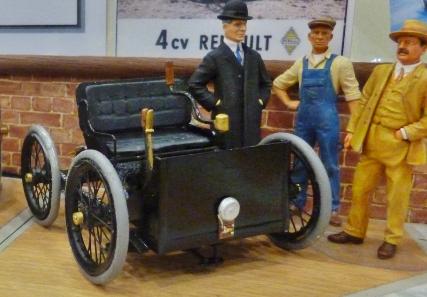
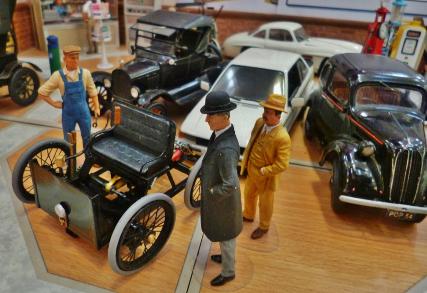
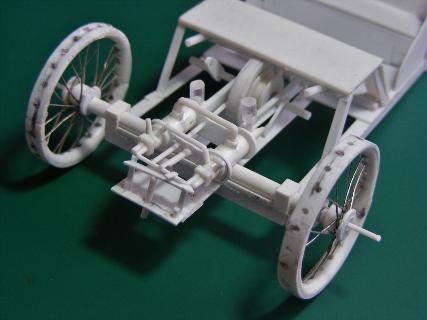
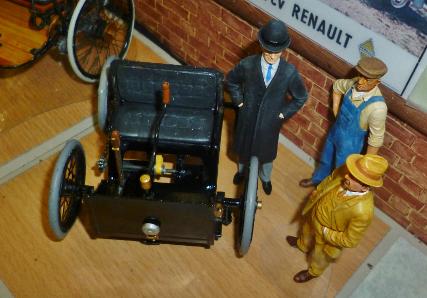
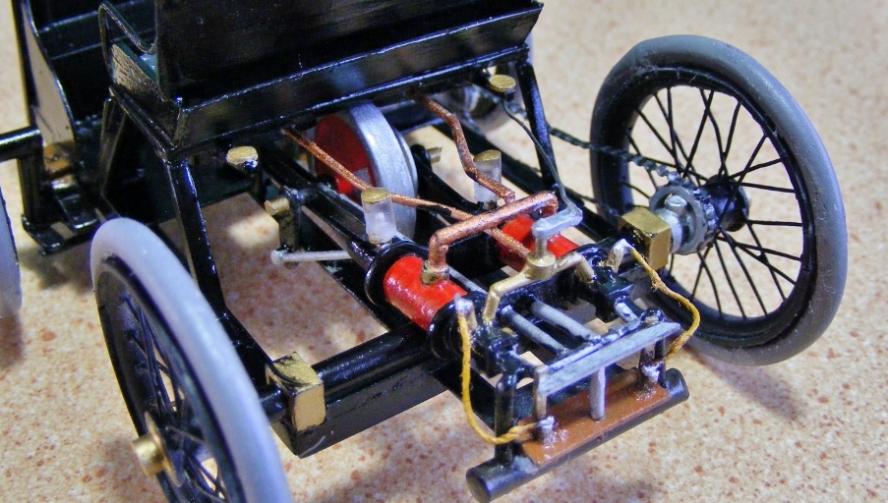
Rod scratch built this model in the early part of 2017 using plasticard, “Evergreen” plastic strip and rod, and household wires. He drew his own plans from dimensions in books collected photo's and information from his extensive library as well as the internet. Techniques used for scratch building can be found in our "Articles and Projects" pages
It is largely primed and painted with Halfords acrylic car spray paints, Humbrol enamels and acrylics were used for the detail painting.
RETURN TO :-
